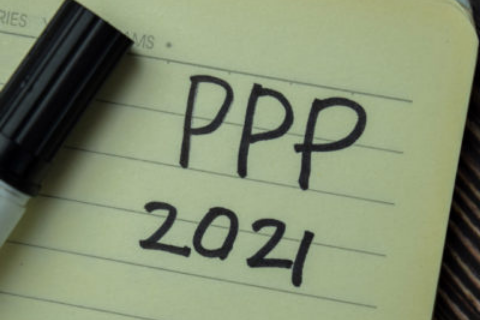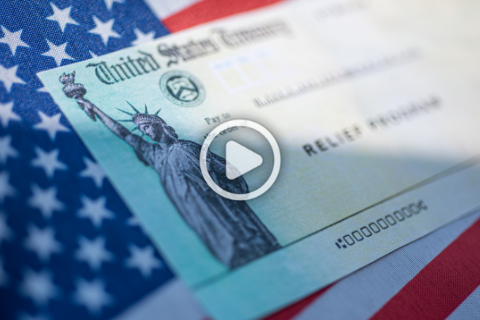Posts by Aprio Author
Portfolio Companies: Are You Eligible for the ERC?
30 Second Summary: Portfolio Companies and the ERC: While a controlled group relationship is generally unlikely between a private equity firm and its portfolio companies, special controlled group rules may apply when claiming the ERC in some scenarios. Impact On Your Business: Controlled group rules applicable to the ERC can play a significant role in employer eligibility…
Read MoreControlled Groups: What You Need to Know about the ERC
30 Second Summary: The Full Story: If your company is part of a controlled group, you may still be eligible for the Employee Retention Credit (ERC). Being a part of an aggregated group of companies does not disqualify you as an eligible employer – it simply changes the rules. Who do the ERC aggregation rules…
Read MoreDon’t Sell Yourself Short on the ERC – Reevaluate Your Small Employer Status
At a Glance: The full story Eligibility aside, the size of your workforce is one of the most influential factors driving the ultimate value of your Employee Retention Credit (ERC). There’s been some debate over the correct method for classifying and counting full-time employees when evaluating large or small employer status. Lack of specificity in…
Read MorePodcast: Justin Elanjian Featured on North Fulton Business Radio
What You Need to Know About the Paycheck Protection Program and Employee Retention Credits, with Justin Elanjian, Aprio, LLP (North Fulton Business Radio, Episode 339) Aprio Partner Justin Elanjian joined John Ray to discuss the Paycheck Protection Program (PPP) and Employee Retention Credit (ERC), why many businesses don’t know they’re eligible for ERC, and how…
Read MoreThe Top 4 Myths About the Employee Retention Credit
30-Second Summary: The Main Takeaway: Businesses could obtain up to $33,000 per employee if they are eligible for the Employee Retention Credit (ERC). Impact on Your Business: Many businesses are leaving money on the table because they don’t understand how the ERC works. Next Steps: Be proactive and debunk these four myths many businesses believe about the ERC,…
Read MoreEIDL Advances No Longer Reduce PPP Loan Forgiveness
On January 8, 2021, the U.S. Small Business Administration (SBA) issued a Procedural Notice (the Notice) – Repeal of Economic Injury Disaster Loan (EIDL) Advance Deduction Requirement for SBA Loan Forgiveness Remittances to Paycheck Protection Program (PPP) Lenders. The Notice Section 1110(e)(6) of the Coronavirus Aid, Relief, and Economic Security Act (CARES Act) required the SBA to deduct the…
Read MoreThe Key Reporting Changes Provider Relief Fund Recipients Should Know for 2021
The Key Reporting Changes Provider Relief Fund Recipients Should Know for 2021 Healthcare providers that received Provider Relief Fund (PRF) payments exceeding $10,000 in aggregate should take note: the U.S. Department of Health and Human Services (HHS) announced on January 15, 2021, a delay in the opening of the PRF Reporting Portal and applicable reporting…
Read MoreSecond Draw PPP Loan Application Released by SBA
On January 8, 2021, the U.S. Small Business Administration (SBA) released the Second Draw Borrower Application Form, SBA Form 2483-SD, for borrowers seeking a Second Draw PPP Loan. IMPORTANT NOTE: Borrowers who previously returned some or all of their First Draw PPP Loan funds or did not accept the full amount will also need to submit a Borrower…
Read MoreFirst Draw PPP Loan Application Eligibility and Requirements
On January 8, 2021, the U.S. Small Business Administration (SBA) released the Borrower Application Form, SBA Form 2483, for businesses applying for a First Draw PPP Loan or requesting an increase in their First Draw PPP Loan. Existing borrowers seeking a Second Draw PPP Loan will need to submit the Second Draw Borrower Application Form, SBA Form…
Read MoreWebinar: Unpacking PPP Updates from the Latest Stimulus Bill
The Consolidated Appropriations Act, 2021 (the Act) was passed by Congress on December 21 and includes some significant changes to the Paycheck Protection Program (PPP). The Act not only provides for a second draw for certain borrowers, but it includes a flurry of changes to existing PPP loans, highlighted by modifications to the tax implications,…
Read More









